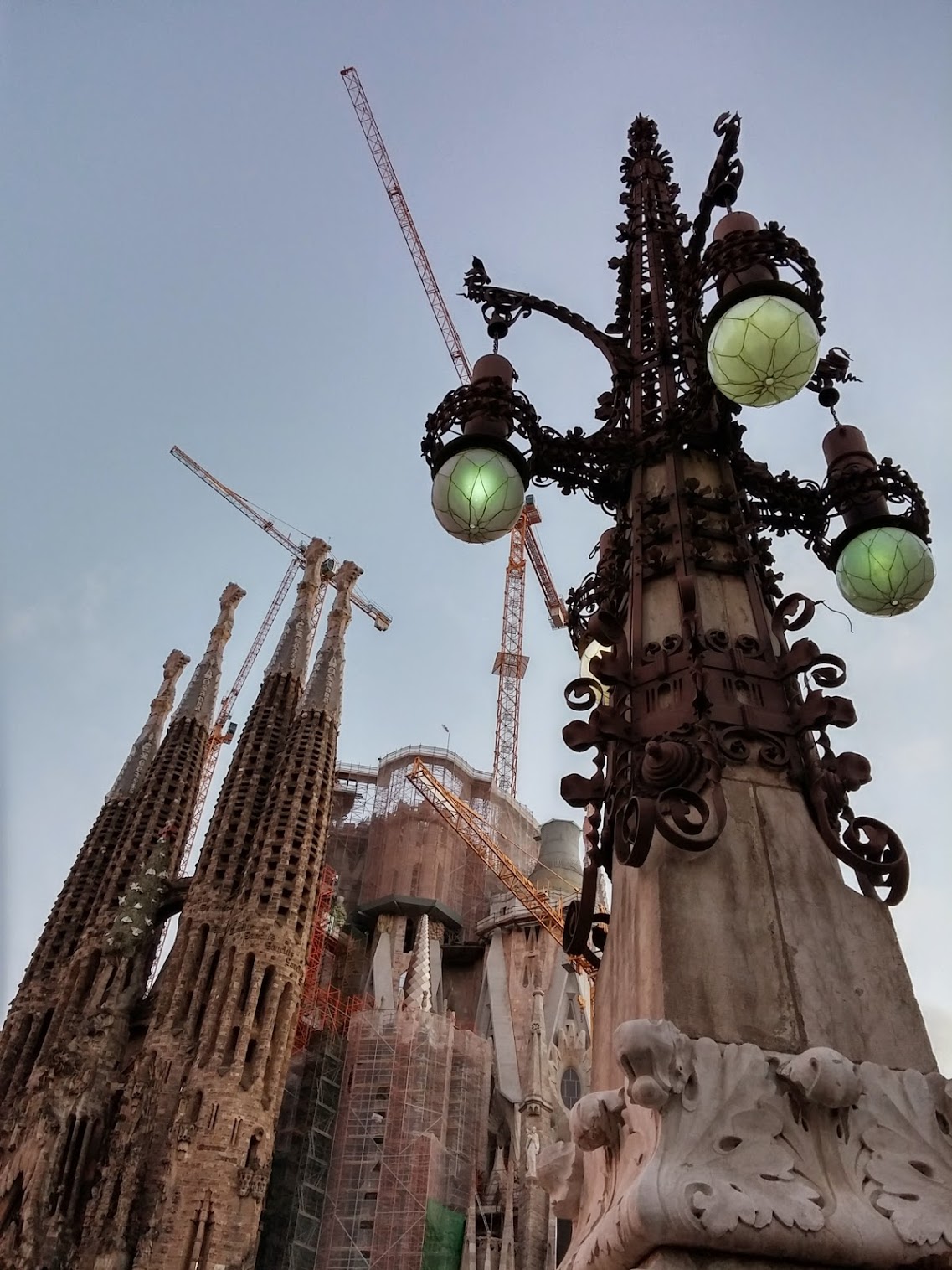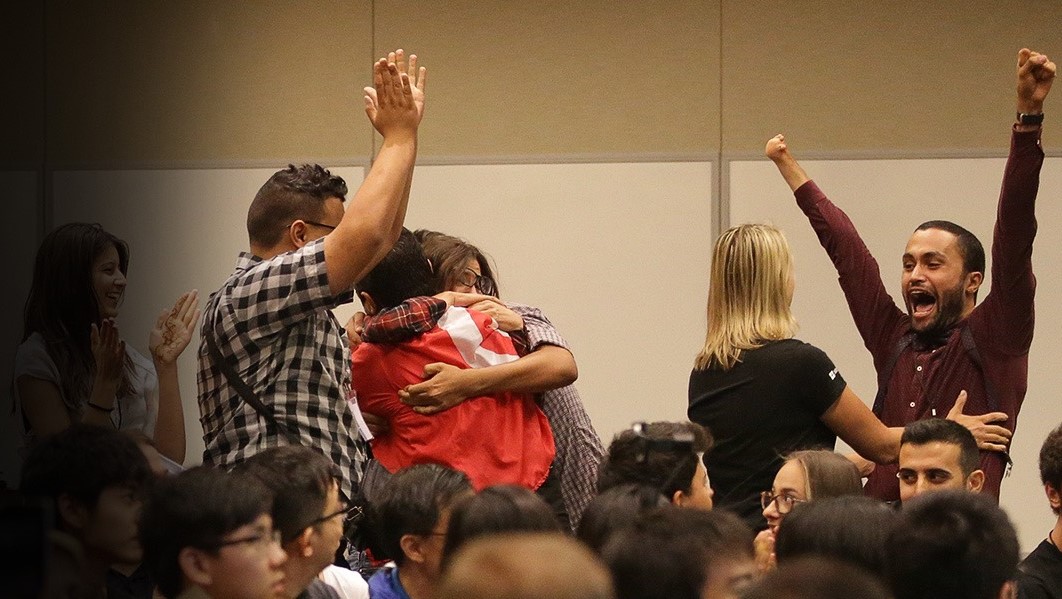As the winners of the Imagine Cup World Finals have been revealed – congratulations once again to the Czech Republic’s X.GLU – we look forward to seeing what all of the finalists will achieve in their bright futures.
This year saw the 15th anniversary of the competition come to a close, and to celebrate, we’re taking a look back at how this incredible opportunity for ambitious, passionate students from all around the world came to fruition, in the words of one its founders.
By Laurent Ellerbach, Technical Evangelist Lead, Central and Eastern Europe:
It all starts with a great idea

Do you know how Imagine Cup was born? I was there right from the start. In January 2003, I went to Redmond for a summit to meet with my peers from around the world. The idea of Imagine Cup came up during a discussion I had with Morris Sim, who was the worldwide Academic Director at the time.
Working with schools and universities made us realize that most of the projects faculties were asking students to do weren’t grounded in real-life applications or easily relatable (and therefore, not very exciting). At the same time, many student associations around the world work on real projects to help poor countries or work as junior entrepreneurs, teach and more. These projects really motivate students as they have real impact.
As a result, Morris and I were looking for a new idea to engage with students all around the world, to inspire them and to challenge their technology skills. Fairly quickly we came up with the idea of holding a competition for technology students, an idea I had played around with for a while.
We decided that we wanted to trigger skills and creativity through the development of projects that help solve real problems and that are sustainable. We also agreed on the main values of this competition: group work, technologies, sustainability of the projects and tackling real problems.
The next day we presented the concept to everyone at the summit. Everyone loved the idea and, that the decision was made to test the concept as soon as possible. TechEd Europe in Barcelona in July 2003 seemed to be the perfect place to run the final.
This inaugural worldwide Imagine Cup final in Barcelona in 2003 became an immediate success. The developers and IT experts that visited the event were simply amazed by the projects. Jean-Philippe Courtois, EVP and President of Microsoft Global Sale International, announced the winner during his keynote at the end of the competition, and he remains one of the biggest fans of Imagine Cup to this day.
What’s in a name?
Between the initial conception of the competition and the first final in Barcelona, there was a lot to do! One of the first points of call was to come up with a catchy name.

All 12 countries that had agreed to run a local Imagine Cup competition in this first year started off with a different name for their national competitions that they invented themselves. For France – the country I was working in – after couple of beers and a brainstorm, we came up with “Unlimited Coding”.
Sagrada Familia, BarcelonaThe French event took place in May, and Morris, visited us. He told us the name that his team gave to their national competition – Imagine Cup. We immediately loved it! Funnily enough, Morris actually preferred the Unlimited Coding title that we had come up with in France, though my team and I convinced him to stick with his version.
We loved the “Imagine” part of the brand – students will be inspired to imagine our future, and then create it.
For the first two years of the competition, most of the regions combined their own initial name along with the Imagine Cup brand. It was only in the third year of the competition that they all started to call it Imagine Cup, as it’s globally known today.
The Imagine Cup effect
When you’re a student participating in Imagine Cup, you have a unique and unforgettable experience – at least that’s the feedback I’ve had from them!
Not only can you live through your creativity and passion and challenge your skills, but you also meet with peers and experts from all over the world and create a network that will help with your career.
A lot of former Imagine Cup participants have used Imagine Cup as a platform to accelerate their career:
I’ll start with the story of Kobojo. All 4 founders of Kobojo were Imagine Cup participants: Vincent Vergonjeanne, CEO, was part of the winning team in Software Design in Brazil in 2004, Franck Tetzlaff, COO, and Sébastien Monteil, CTO, were finalists in France in 2003 and 2004, they also participated in the worldwide final in Japan in 2005, and Philippe Desgranges, Executive Producer, was one of the finalists in 2003 and 2004.
They all met through Imagine Cup and the intense moments they spent together during the competition, as team mates or as coaches, resulted in the birth of Kobojo in 2008 – now a Paris-based game development studio. During an interview I had with them they said:
“Imagine Cup allowed us to access entrepreneurship. We had the chance to get access to strategic coaches like the founder of Match.com. It would not have been possible without the Imagine Cup. Imagine Cup really gives the ability to test ideas. We innovate and create in a totally free environment. It allows working on topics you’ll never be able to work in a real company.”
I also like very much the story of Johanna Rowe, who participated in Imagine Cup in 2007. At the time she was a design student, and her school had a partnership with an engineering university around Imagine Cup.
She registered for the category “interface design” and quickly became very passionate about it. At the national final in Paris she won the bronze medal. With it came the success: “A company contacted me for a prototype. But it was a bit early; I’ve decided to continue my studies”. The following summer she participated in a “Surface Academy” organized by Microsoft France. Because of the blog posts she was producing, she was quickly contacted by a major French bank to work on designing their software.
Of course, there are many more projects and former students that I could list! All are very successful in their careers now, and some have started their own companies. Microsoft is also supporting them through programmes such as BizSpark, but also with a lot of personal coaching, contacts, and help when they need it.
Stories like these are happening all over the world. For me, Imagine Cup is like a big family – once you’re in, you’ll never be alone again. You continue to stay involved, to coach, and to help other students.
It’s fantastic to see how Imagine Cup has grown over the last 15 years, with all the innovative projects, passion and creativity that come with it, and all of the post-Imagine Cup successes make me proud to be the co-founder. Good luck to all past and future competitors!





